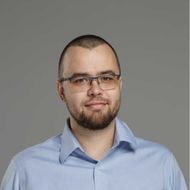An article by scientists from the Perm campus was recognized for its special contribution to the international scientific reputation of the National Research University Higher School of Economics

The research conducted by the head of the International Laboratory of Intangible-driven Economy, Petr Parshakov, junior researcher at IDlab Evgenia Shenkman, senior lecturer at the Department of Economics and Finance Alexey Chadov, and professor at the University of Maryland Dennis Coats focuses on the reward calculation function for winners and prize-winners of team competitions. The article "Team vs. individual tournament: An organizer’s dilemma" was published in the international journal "Journal of Economic Behavior and Organization."
Researchers from the Perm campus of HSE refined Sherwin Rosen's model for optimal payment distribution, which is used for individual players. The scientists added a new parameter: the efficiency of players in team collaboration, analyzing a large dataset from esports tournaments for this purpose. Thus, a basic model for a team of two players was developed. In the future, it can be expanded for a larger number of competitors. The obtained principle also allows for the establishment of an optimal prize structure in group tournaments across any field, including business or patent battles.
Since 2021, HSE has introduced new types of bonuses for achievements in scientific activities, including a bonus for publications that make a significant contribution to the international scientific reputation of HSE, known as the "mega bonus." This bonus is awarded for articles or scientific reviews published in peer-reviewed journals included in List A+ for a period of three years. In 2024, only six articles in economics were recognized, one of which is the work of researchers from the Perm campus.
Petr Parshakov, Head of the International Laboratory of Intangible Asset Economics

We started working on the article back in 2014, when we found unique data on prizes in cyber sports competitions of various types, both team and individual. At that time, we only had the empirical part of the study, and it was not possible to publish the results. Then Dennis Coates suggested adding a theoretical model that could explain the observed phenomenon. In 2022, after 8 years of work, our paper was finally published.
